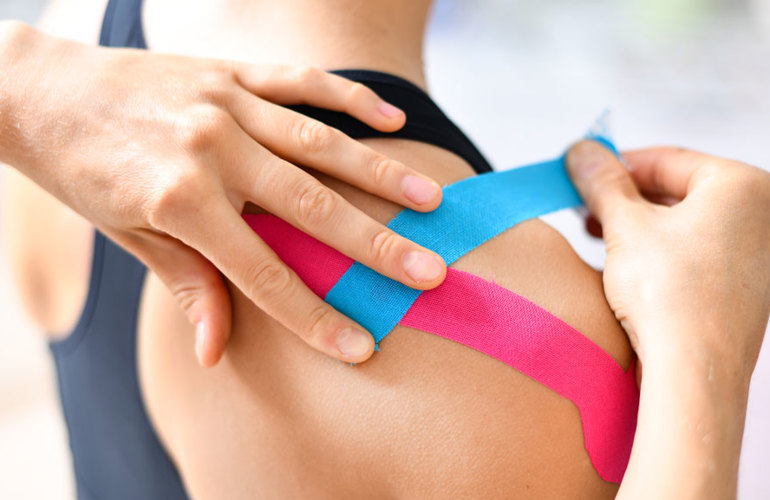
The Power of Menthol: Why I...
VIEW >

Chiropractor’s Guide to Inc...
VIEW >

Not yet a Pro Portal member? Sign up here.
Chiropractors, Physical Therapists, Massage Therapists and other Hands-On Healthcare Professionals are an essential health and wellness resource for individuals of all ages. We partner closely with these professionals on helping people perform better and move ‘pain-free’.
Our topical pain relief products were specifically formulated with these hands-on healthcare professionals (and their patients) in mind. Our fast-acting formulation with penetration enhancers plus 10% menthol, MSM, Glucosamine is like no other. Embracing hands-on healthcare professionals and topical pain relief solutions like Stopain® Clinical provides patients and their families with the ultimate wellness solution.
Visit our clinic locator to find a healthcare professional in your community.

Never in our professional lives has it been more critical to not “go it” alone. We are all connected and dependent on each other’s sharing of treatments that work well and contribute to successful outcomes. Besides, wouldn’t you like to help more people than less people?
More options working differently Sensory connections can be disturbed at any moment, when disconnecting pain and hypersensitivity; or creating lack of sensation. Patients have little patience for healing nerves, joints and soft tissue, waiting for inflammation to subside and healing to take place.
There are many emerging topical solutions that claim to help complaints in the body, but what’s best for each patient depends on the condition in question. Some patients need anti-inflammatory topicals; some prefer more stimulating counterirritants that contain menthol and other quality ingredients such as MSM and glucosamine. The choice depends on your objective with the patient.
Start with a product that is proven to be successful for their particular concern. For example, if the goal is to reduce pain, then you may decide between a counterirritant and a hemp-derived CBD anti-inflammatory. They work very differently: Counterirritants are the most commonly recommended topical for pain relief. Their ingredients (usually menthol) work by stimulating cold receptors, causing a cooling sensation or tingling and thereby distracting the patient from the pain underneath. Hemp-derived CBD acts as an anti-inflammatory and must penetrate the skin to reach endocannabinoid system (ECS) receptors in order to be effective. These two distinct types of solutions coupled with their different price points and usage profiles further support the importance of offering both a menthol-based and a hemp-derived CBD topical.
Repetitive dosing is an absolute. In my experience this means a minimum of three times a day. Topicals can be applied regularly throughout the day if needed and pre- and post-activity to help encourage adherence to home exercise programs.
Proper application instructions are essential. A ‘pain spot’ as in lateral epicondylitis requires only massaging the topical into that ‘spot.’
A painful ‘region’ such as the entire lumbar spine may do better with a broader application or ‘smear’ across the low back or even better by combining or layering the topical with another intervention like IASTM or kinesiology taping.
The right topical can be easily combined or layered with other modalities and adjunct therapies you use in practice such as laser, pulse therapy, and ultra-sound as well as two of my favorite interventions — IASTM and kinesiology taping. The layering of these complementary manual therapy processes along with quality topical solutions allows you to become more efficient and better serve patients.
As clinicians have incorporated more advanced soft tissue treatments, we have also started introducing topicals for a number of different reasons. The two major reasons for utilizing topicals in conjunction with soft tissue treatments are as a “distractor” to allow for treatment to start, and secondly as a post-treatment application to assist in pain control and/or reduce post-treatment soreness.
The use of topicals for pre-soft tissue treatment is beneficial for those with high sensitivity to the tissue being worked on. Simple examples of this include areas like the bottom of the ticklish foot. Other situations include areas of high sensitivity to injury like tendinopathy, hypersensitive areas due to heavy fascial restriction, post-surgical tissue/scars, or high tissue sensitivity/reactivity.
Applying the topical about a minute prior to treatment allowed for desensitization of the region. This then allowed the clinician to work without the patient consistently trying to “run” away from tissue contact. I especially found this valuable with treatment of plantar fasciitis and the foot being very sensitive to being ticklish.
While the topical was applied to the bottom of the foot, I would work on the anterior and posterior compartments of the leg. I would ask the patient when they started feeling the sensation of the topical. Once they replied in the affirmative, I would switch focus to the bottom of the foot with much greater ease of treatment to the plantar surface.
With post-treatment application, topicals can be used to reduce post-treatment sensitivity. I have always asked a patient as part of my initial encounter, “if they get a deep tissue massage, do they get very sore?” If the patient responds in the affirmative, I always reduce the intensity of the treatment and make sure I apply topicals to the involved tissue and send them home with small sample packets to apply over the next 24-48 hours.
The patient in return would tend to ask for the product as they saw the benefit of pain control in the acute state between visits.
Topicals have also been used with the application of taping in clinical settings. As kinesiology taping has become more prevalent, the use of topicals in conjunction with taping has also increased.
The greatest obstacle to taping with topicals is the base of the topical. If the topical is applied prior to taping and does not absorb well or is oilier in base; the tape will not stick to the skin. If the tape is applied first and the “creams” are applied on top of the tape, the tape will not stick long, as an oily product will start to dissolve the adhesive and the tape will fall off.
Eventually, companies started producing topicals that could be used on the skin prior to taping, or applied over the tape. This in effect created pain patches. Not only did you have the ability to use taping as a way of treating patients when they left your office, but you turned the tape into a dermal patch.
The benefit to this is the much longer-lasting effect of the topical application, and it works exceptionally well with a menthol-based topical. The topical “re-activates” during showers or during times of exertion as sweating may start or pores open. This gives a sensation of cooling on the skin for days following application.
The advent of sprays that will not affect the adhesive of the tape made it that much easier to turn your tape into a dermal patch and a double-effect pain control application. After I have determined the best taping procedure through specific evaluation methods, I will spray the tape with topicals to increase the pain control of the tape on two different fronts, both neurologically mediated.
The tape when applied in proper methods can assist in resetting the muscular function, allowing for greater movement or muscle function with less pain as well as stimulating the nerve receptors in the skin that assist in blocking pain sensation. The topical further enhances this pain control with ingredients like menthol that further stimulate nerve receptors in the skin, assisting in blocking pain sensation.
Taping has always been one of my best ways of sustaining the improvements I make in the office and controlling pain.
Providing manual human intervention By having well-formulated topical pain relief solutions in your toolkit you will be able to more effectively match the topical with the patient and the specific problem you are working to resolve. You will also have a topical (or medium) that will help complement other modalities and therapies while treating the patient in the clinic.
To help make an informed decision on selecting your go-to set of topicals, here are three important considerations when selecting a topical brand:
Jeffrey Tucker, DC, practices in West Los Angeles, Calif., and is the current president of the American Chiropractic Association Rehabilitation Council. Save the date for the next annual rehab symposium in Orlando, Fla., on March 13-14, 2021. He can be reached at DrJeffreyTucker.com.
Gregory Doerr, DC, CCSP, is the developer of Functional Soft Tissue and Functional Taping for MSK Injuries as well as the co-developer of FAKTR. He practices in Cliffside Park and Hackensack, N.J., and can be reached at FunctionalSoftTissue.com.